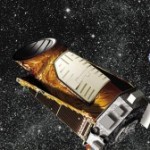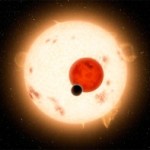NASA uses big data to confirm 715 strange new exoplanets …

Unlike amateur astronomy, which mostly involves pointing and looking, the data from high-level astronomy tend to come in the form of abstract curves and spiked graphs. As a result, the data often needs to be analyzed before scientists even know what it is they’re looking at.
NASA’s Kepler launched with a mission to find planets outside our solar system, but it’s still not sending back pretty pictures of distant planets. When NASA scientists sift through the mountain of readings, they have several levels of hit-quality: there are candidate exoplanets, and then there are exoplanets. Kepler had previously reported thousands of candidate exoplanets, but only confirmed a fraction of them, literally sending astronomers more data than they could handle.
Now, a new technique allows NASA to sift through candidate exoplanets as batches, rather than individually. The first batch released dwarfs Kepler’s previous all-time total, adding 715 new planets for a total of 961. The total for all telescopes is now 1,750. Multiple planets are regularly found around the same star, with all 715 coming from just 305 systems overall. And as scientists had previously derived from Kepler’s data, roughly 20% of those are probably at least capable of supporting life — if, that is, you believe that the ability to support liquid water is enough to call something life-capable.
Kepler’s newest findings include some real doozies in the novelty department, as well. Previous exoplanets have been made almost entirely of diamond, or ranged around the galaxy as lost giants, and now Kepler has confirmed the existence of a binary system with three intertwining planetary orbits spread between the two stars. Another has seven planets orbiting a single star, all closer than the Earth orbits the sun. Yet another has five speedy satellites, some of which orbit their star in just two Earth weeks!
These and others were found thanks to a few fundamental insights into the process of planet-finding. Foremost, researchers realized that it’s much easier to confirm a planet in a multi-planet system; that is, readings that imply multiple planets are much harder to explain as anything other than planets. Single-planet systems, on the other hand, tend to produce readings that are broadly similar to other phenomena, and as such take more time to confirm. By sticking to multi-planet systems, the back-log of potential exoplanets has been greatly diminished.
Techniques in planet-finding have been advancing at a lightning pace over the past five years, but this is the first indication that the planet-confirming techniques must advance right along with them.
Follow this link:
NASA uses big data to confirm 715 strange new exoplanets …


